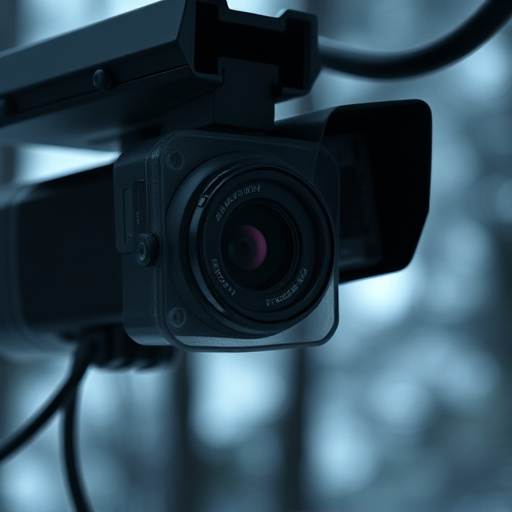Small hidden cameras disguised as everyday items like clocks, picture frames, and light bulbs offer sophisticated bedroom privacy and security solutions. With advanced features such as motion detection, night vision, and remote access via smartphone apps, these mini surveillance devices provide homeowners with discreet surveillance options for preventing theft, ensuring safety during sleep, or maintaining privacy. Detecting these cameras requires techniques like infrared sensors and electromagnetic radiation frequency analysis to uncover concealed devices behind walls or inside everyday objects.
Hidden recording devices, particularly small hidden cameras, pose a significant threat to privacy in intimate settings like bedrooms. This article delves into the world of these surveillance tools and explores effective signal scanning methods to detect their presence. We dissect various techniques, from non-invasive scanning to advanced technologies like thermal imaging and radio frequency detection. Additionally, we examine real-world applications, legal considerations, and countermeasures to protect your personal spaces from unauthorized observation.
- Understanding Small Hidden Cameras for Bedroom Surveillance
- – A brief overview of hidden camera technology
- – Types and functions of small hidden cameras
- Signal Scanning Techniques to Detect Hidden Cameras
Understanding Small Hidden Cameras for Bedroom Surveillance
Small hidden cameras, often referred to as spy cameras or mini surveillance devices, are a sophisticated way to ensure bedroom privacy and security. These compact devices can be easily concealed within everyday objects like clocks, picture frames, or even light bulbs, making them virtually invisible to the naked eye. With advanced features such as motion detection, night vision, and remote access via smartphone apps, small hidden cameras offer an effective solution for homeowners seeking discreet surveillance.
In the context of bedroom surveillance, these tiny cameras provide a sense of peace of mind by allowing individuals to monitor their personal spaces without intrusion. Whether it’s for preventing theft, ensuring safety during sleep, or maintaining privacy, small hidden cameras have become indispensable tools for those prioritizing discretion and security in their bedrooms.
– A brief overview of hidden camera technology
Hidden camera technology, often referred to as surveillance or spy cameras, has evolved significantly over time, becoming increasingly sophisticated and compact. These small hidden cameras for bedroom settings and other private spaces are designed to capture footage discreetly, raising awareness and providing security. The devices can be disguised as everyday objects like smoke detectors, power outlets, or even flowers, making them nearly impossible to detect without thorough inspection.
Modern hidden camera technology offers high-resolution video quality, night vision capabilities, and motion detection features, ensuring that users receive clear and detailed footage when it matters most. Their compact size allows for strategic placement in various environments, from bedrooms to offices, providing peace of mind and evidence capture for personal or professional needs.
– Types and functions of small hidden cameras
Small hidden cameras, a discreet and powerful tool, come in various types designed to suit different needs. Among the most popular for bedroom surveillance are miniature cameras that can be disguised as everyday objects like smoke detectors, light switches, or even plant pots. These compact devices pack advanced functionalities, including HD video recording, motion detection, and night vision capabilities, making them ideal for capturing footage without raising suspicion.
The primary function of these small hidden cameras is to provide covert surveillance, offering peace of mind by allowing users to monitor their bedrooms remotely. Whether it’s for home security, keeping an eye on valuable items, or ensuring privacy, these cameras offer a simple yet effective solution. Their compact size and ability to blend seamlessly into the environment make them a popular choice for those seeking discreet monitoring options for their bedrooms.
Signal Scanning Techniques to Detect Hidden Cameras
Detecting hidden cameras, especially the tiny ones designed to fit discreetly in a bedroom, requires sophisticated signal scanning techniques. One method involves using specialized infrared (IR) sensors and cameras that can pick up heat signatures, as many small hidden cameras operate on IR light for night vision. This technique is particularly useful in low-light conditions, enabling security professionals to uncover devices that might be concealed behind walls or inside everyday objects.
Advanced signal scanning also incorporates frequency analysis of electromagnetic radiation emissions. Many hidden cameras emit radio signals when they are active, and experts can use spectrum analyzers to detect these signals, even if the camera is not transmitting video data. This method is especially effective for locating miniature cameras that might be attached to furniture or other objects in a bedroom without any visible signs of tampering.
In exploring the intricate world of small hidden cameras for bedroom surveillance, it’s evident that these sophisticated devices offer a unique perspective on home security. Understanding their diverse functions and employing advanced signal scanning techniques can help ensure peace of mind. By staying informed about these methods, individuals can proactively detect potential hidden cameras, fostering a safer and more private living environment. This knowledge empowers folks to take control of their personal spaces in today’s digital age.
